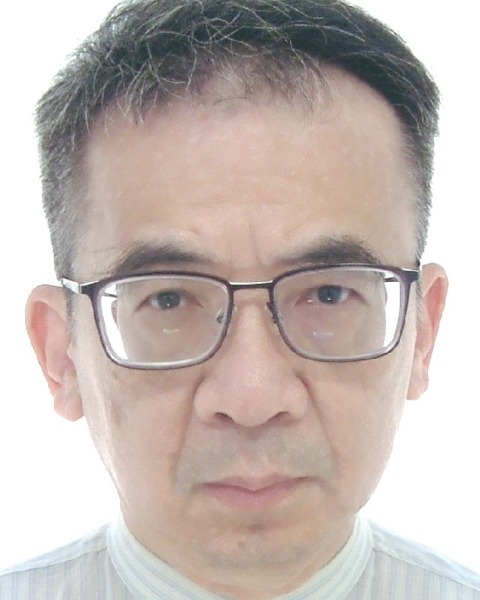Male Reproductive Tract
Poster Session C
(P-217) C-X-C motif chemokine ligand 5 is a WNT-1-induced oncogene with proinflammatory and antioxidation roles in human prostate cancer cells
Friday, July 19, 2024
8:00 AM - 9:45 AM IST
Room: The Forum

Horng-Heng Juang, PhD
Professor
Chang Gung University
Kwei-Shan, Taiwan (Republic of China)
Poster Presenter(s)
Abstract Authors: Horng-Heng Juang1; Syue-Ting Chen1
1. Department of Anatomy, College of Medicine, Chang Gung University, Kwei-Shan, TaoYuan, Taiwan
Abstract Text: The C-X-C motif chemokine ligand 5 (CXCL5), also known as epithelial neutrophil-activating protein 78 (ENA78), is part of the chemotactic cytokines superfamily. CXCL5 is a well-known inflammatory mediator and a potent attractant for immune cells, but its role in the human prostate is mainly unexplored. Serum and glucocorticoid-regulated kinase 1 (SGK1) is a canonical factor affecting multiple genes' expression and signal transduction. Heme oxygenase-1 (HO-1) is a tissue protector with anti-inflammatory and anti-oxidant properties. In this study, we investigated the expression, functions, and regulatory mechanisms of CXCL5 in prostate cancer cells. Overexpression of WNT family 1 (WNT1) instigates active β-catenin translocation into the nucleus, subsequently inducing CXCL5 expression in prostate cancer cells. CXCL5 provokes neutrophil migration and enhances prostate cancer cell proliferation and invasion in vitro. The xenograft animal model results reveal that CXCL5-knockdown attenuates tumor growth in vivo. Treatment with SGK650394, an SGK1 inhibitor, blocks the gene expression of CXCL5 in human prostate cancer PC-3 cells. Additionally, CXCL5 positively regulates IL-6 expression in prostate cancer cells through a feedback loop and heightens the gene expression of prostate-specific antigen (PSA) in a CXCR2-dependent manner. Moreover, CXCL5 upregulates HO-1 expression to counteract the H2O2-induced reactive oxygen species (ROS), suggesting a role in antioxidation. Our results identify CXCL5 as an oncogene with proinflammatory and antioxidative properties in human prostate cancer cells and as a downstream gene of WNT1. This study also uncovers a linkage between the SGK1 signal pathway and the expression of CXCL5 in prostate cancer cells. Therefore, targeting the CXCL5/CXCR2 signaling pathway may offer a novel therapeutic strategy for prostate cancer.
1. Department of Anatomy, College of Medicine, Chang Gung University, Kwei-Shan, TaoYuan, Taiwan
Abstract Text: The C-X-C motif chemokine ligand 5 (CXCL5), also known as epithelial neutrophil-activating protein 78 (ENA78), is part of the chemotactic cytokines superfamily. CXCL5 is a well-known inflammatory mediator and a potent attractant for immune cells, but its role in the human prostate is mainly unexplored. Serum and glucocorticoid-regulated kinase 1 (SGK1) is a canonical factor affecting multiple genes' expression and signal transduction. Heme oxygenase-1 (HO-1) is a tissue protector with anti-inflammatory and anti-oxidant properties. In this study, we investigated the expression, functions, and regulatory mechanisms of CXCL5 in prostate cancer cells. Overexpression of WNT family 1 (WNT1) instigates active β-catenin translocation into the nucleus, subsequently inducing CXCL5 expression in prostate cancer cells. CXCL5 provokes neutrophil migration and enhances prostate cancer cell proliferation and invasion in vitro. The xenograft animal model results reveal that CXCL5-knockdown attenuates tumor growth in vivo. Treatment with SGK650394, an SGK1 inhibitor, blocks the gene expression of CXCL5 in human prostate cancer PC-3 cells. Additionally, CXCL5 positively regulates IL-6 expression in prostate cancer cells through a feedback loop and heightens the gene expression of prostate-specific antigen (PSA) in a CXCR2-dependent manner. Moreover, CXCL5 upregulates HO-1 expression to counteract the H2O2-induced reactive oxygen species (ROS), suggesting a role in antioxidation. Our results identify CXCL5 as an oncogene with proinflammatory and antioxidative properties in human prostate cancer cells and as a downstream gene of WNT1. This study also uncovers a linkage between the SGK1 signal pathway and the expression of CXCL5 in prostate cancer cells. Therefore, targeting the CXCL5/CXCR2 signaling pathway may offer a novel therapeutic strategy for prostate cancer.
